Every region in America has that one dish—the one passed down through generations, that tells a story of hardship, creativity, and survival. For the Southern states, few recipes carry as much weight and flavor as the WW2 wrapped gator bites recipe. Born out of wartime necessity, refined by swamp-born resourcefulness, and now revived in modern kitchens, this dish is more than a curiosity—it’s a bite of culinary history.
During World War II, Americans were forced to get creative in the kitchen. With meat and rations strictly limited, families turned to wild game to fill their plates. In the Deep South, that meant alligator. Gator meat, lean and tough, needed careful preparation—but when soaked in buttermilk, seasoned with local spices, and wrapped in bacon or pork fat, it became something truly special. What started as survival food became a beloved Southern staple that’s now found on the menus of Cajun restaurants and gourmet food trucks alike.
In this guide, you’ll learn the complete process of making a traditional WW2 wrapped gator bites recipe—from history and ingredient sourcing to prep, cooking, sauces, sides, and even leftover ideas. We’ll also dive into why gator meat is back in fashion and why this recipe should be your next crowd-pleasing appetizer.
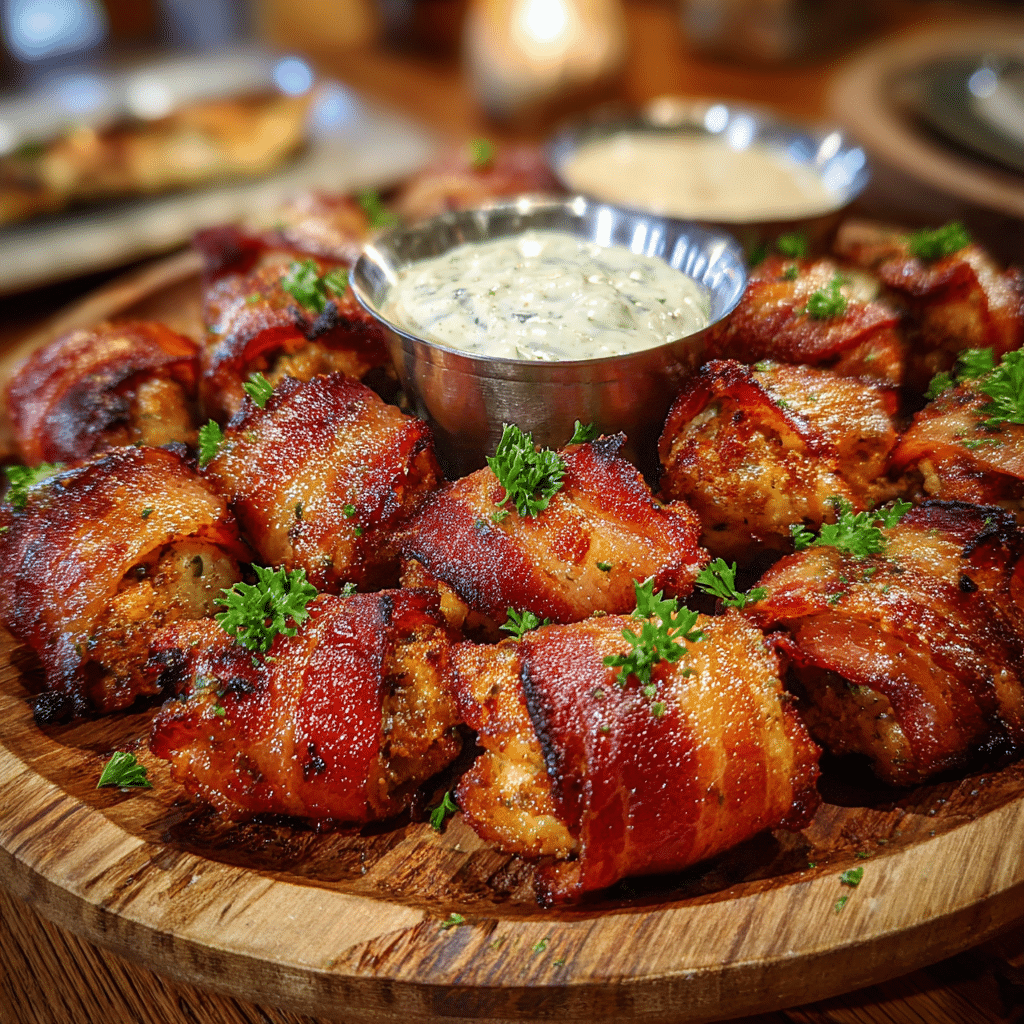
Don’t miss our deviled egg potato salad to pair perfectly with these bites.
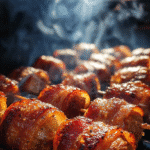
WW2 Wrapped Gator Bites Recipe: The Ultimate Deep South Twist You Need to Try
- Total Time: 45 minutes
- Yield: 4 servings 1x
Description
WW2 Wrapped Gator Bites are a Southern-inspired appetizer made from tender alligator tail meat marinated in buttermilk, seasoned with Cajun spices, and wrapped in bacon. This historic recipe delivers smoky, savory bites with roots in wartime cooking.
Ingredients
1 to 1.5 lb alligator tail meat, cut into cubes
1 cup buttermilk
1 tbsp Cajun seasoning
1 tsp garlic powder
1/2 tsp black pepper
12 to 14 slices thick-cut bacon
Toothpicks, as needed
Instructions
1. Rinse and trim the alligator tail meat, removing any tough membrane.
2. Place gator meat in a bowl and cover with buttermilk. Refrigerate for at least 4 hours or overnight.
3. Remove meat from buttermilk and pat dry.
4. Season evenly with Cajun seasoning, garlic powder, and black pepper.
5. Cut bacon slices in half and wrap one piece around each gator cube.
6. Secure with toothpicks and place on a baking sheet or grill rack.
7. Cook on a grill over medium heat for 10 to 12 minutes, turning once, or bake at 400°F for 20 to 25 minutes.
8. Optional: broil for 2 minutes at the end for extra crispy bacon.
9. Remove toothpicks before serving and serve hot with dipping sauce.
Notes
Bacon helps keep the lean gator meat moist during cooking. Avoid overcooking, as gator can become tough if cooked too long.
- Prep Time: 20 minutes
- Cook Time: 25 minutes
- Category: Appetizer
- Method: Grill / Bake / Air Fry
- Cuisine: Southern
Nutrition
- Serving Size: 4 to 5 pieces
- Calories: 320
- Sugar: 1g
- Sodium: 590mg
- Fat: 20g
- Saturated Fat: 7g
- Unsaturated Fat: 11g
- Trans Fat: 0g
- Carbohydrates: 3g
- Fiber: 0g
- Protein: 28g
- Cholesterol: 85mg
The Rich History Behind the WW2 Wrapped Gator Bites Recipe
Gator Hunting During Wartime Shortages
The Second World War brought about ration stamps, food insecurity, and a reliance on local resources. Down in Louisiana, Florida, and Mississippi, communities didn’t just survive—they innovated. The WW2 wrapped gator bites recipe was born from necessity. Gator was plentiful, and people began to realize that when prepared right, it wasn’t just edible—it was delicious.
The Deep South’s Culinary Resourcefulness
Local hunters would harvest gators, remove the tail meat (which is the tenderest), soak it in whatever brine they had, and wrap it in bacon or fatback to counter its toughness. This method not only preserved the meat’s juiciness but also made it incredibly flavorful—a practice that carries on in today’s Southern kitchens.
Why It’s Making a Comeback Today
In recent years, there’s been renewed interest in vintage and “lost” recipes, especially those with rich backstories. The WW2 wrapped gator bites recipe checks every box: it’s sustainable, protein-rich, culturally significant, and surprisingly easy to make at home.
What Sets Gator Bites Apart in Modern Southern Cooking
Texture and Taste: A Carnivore’s Dream
Gator meat sits at the intersection of chicken and fish. It’s lean, slightly chewy, and takes on marinades beautifully. When wrapped in bacon and grilled or baked, you get a smoky, juicy bite that’s unlike anything else.
The Appeal of Wild Game Recipes
The rise of wild game cooking on social media and TV has led to more home chefs trying out exotic proteins. The WW2 wrapped gator bites recipe is perfect for adventurous eaters—it’s unique but approachable.
Modern Variations: From Grills to Air Fryers
Today’s versions of the WW2 wrapped gator bites recipe often feature spice rubs, modern marinades, and creative dipping sauces. But the heart of the dish remains the same: gator meat, bacon, heat, and bold Southern flavor.
Discover great ideas like pineapple cucumber salad to cool down the spice of gator bites.
All the Ingredients You Need for a WW2 Wrapped Gator Bites Recipe
Traditional Ingredients That Made It Through Time
| Ingredient | Quantity | Notes |
|---|---|---|
| Gator tail meat | 1–1.5 lbs | Boneless, cut into 1″ cubes |
| Buttermilk | 1 cup | For tenderizing |
| Cajun seasoning | 1 tbsp | Adds bold Southern flavor |
| Garlic powder | 1 tsp | Enhances richness |
| Bacon slices | 12–14 slices | Thick-cut preferred |
| Toothpicks | As needed | To secure wraps |
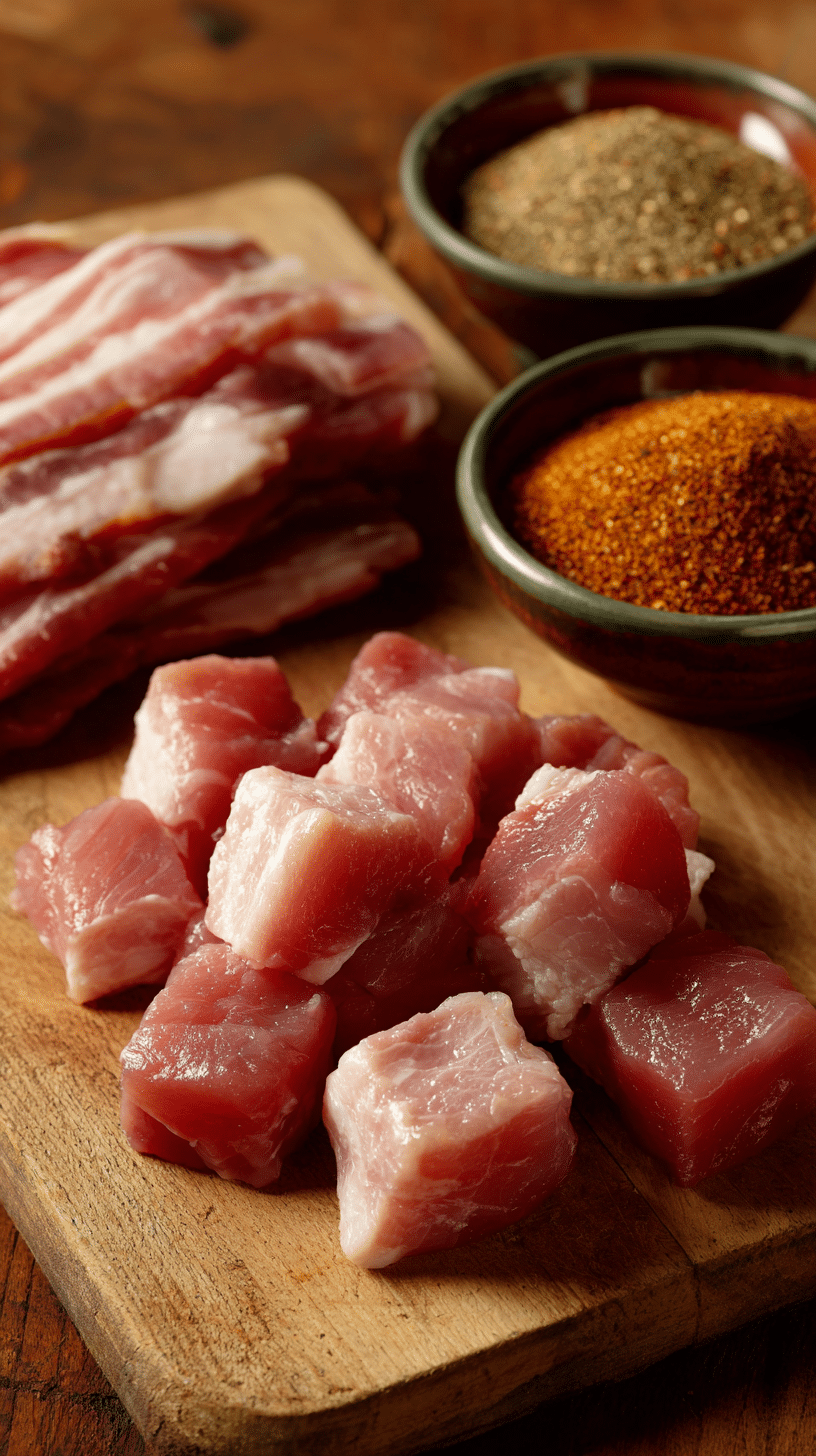
Optional Additions for a Gourmet Twist
- Chipotle powder for smoky heat
- Maple syrup glaze for sweet-savory fusion
- Chopped green onions for garnish
Substitutions and Allergies
You can swap bacon for turkey bacon or pancetta if needed. For dairy-free options, soak gator in lemon juice or coconut milk instead of buttermilk.
Looking for protein-packed ideas? Try high protein chicken salad.
Preparing Gator Meat for the WW2 Wrapped Gator Bites Recipe
Step 1: Clean and Trim
Start by rinsing the gator tail meat and removing any sinew or membrane. This helps improve tenderness in your WW2 wrapped gator bites recipe.
Step 2: Marinate for Magic
Soak the meat in buttermilk for at least 4 hours. Add a splash of hot sauce to mimic the spicy prep used in the original WW2 wrapped gator bites recipe.
Step 3: Season Before Wrapping
Once drained, coat the meat with Cajun seasoning, garlic powder, and pepper. Let it sit for 10 minutes to absorb the flavors fully.
Wrapping and Cooking the Perfect WW2 Gator Bites
How to Wrap Alligator Meat Properly
- Cut bacon slices in half
- Wrap each gator chunk tightly
- Secure with a toothpick
This step is crucial—bacon not only adds flavor but keeps the meat moist during cooking.
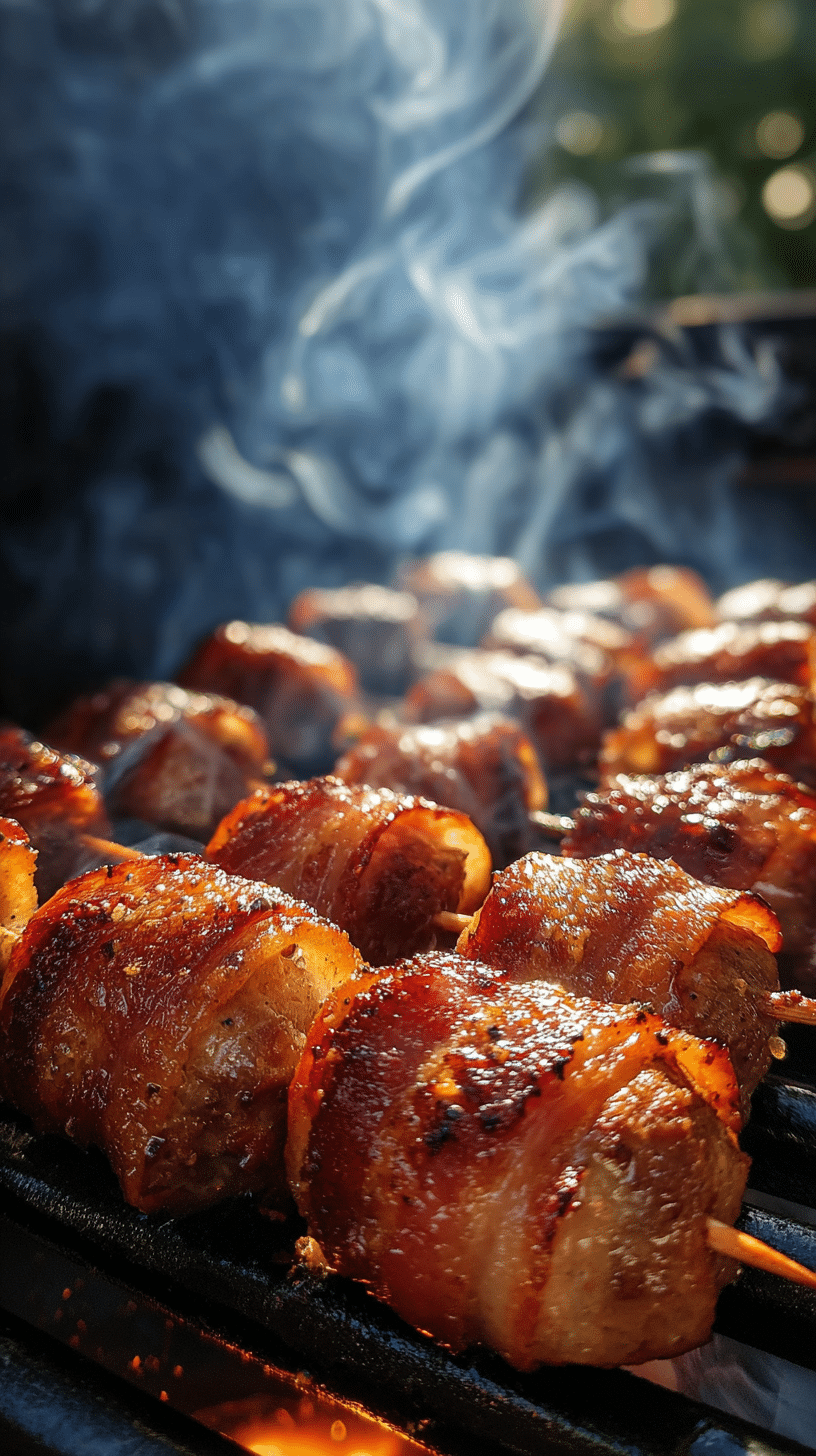
Cooking Techniques: Grill, Bake, or Air Fry
| Method | Time | Temperature | Result |
|---|---|---|---|
| Grill | 10–12 mins | Medium heat | Charred, smoky flavor |
| Oven Bake | 20–25 mins | 400°F | Crisp bacon, juicy meat |
| Air Fryer | 12–15 mins | 390°F | Fast, evenly cooked bites |
Pro Tip: Finish Under the Broiler
For extra crisp, broil the bites for 2 minutes at the end. This enhances the bacon’s texture and brings out extra smokiness.
Sauce Pairings for the WW2 Wrapped Gator Bites Recipe
Classic Southern Sauces
- Remoulade: tangy and zesty, perfect for game meat
- Cajun ranch: creamy, spicy, with fresh herbs
- Garlic aioli: rich and mellow
Homemade Sauces in Minutes
| Sauce Name | Ingredients |
|---|---|
| Spicy Mayo | Mayo + Sriracha + Lime juice |
| Honey Chipotle | Honey + Chipotle powder + Dijon |
| Sweet Mustard | Yellow mustard + Honey + Vinegar |
Pairings That Pop
For spicy gator bites, a cooling sauce like garlic yogurt dip balances the heat. Sweet sauces like honey mustard bring out the smokiness of the bacon.
Check out our conch salad for more seafood and exotic pairings.
What to Serve With Gator Bites for a Full Meal
Southern Staples That Match the Mood
- Buttermilk biscuits
- Collard greens
- Macaroni and cheese
- Corn on the cob
Cold and Fresh Sides
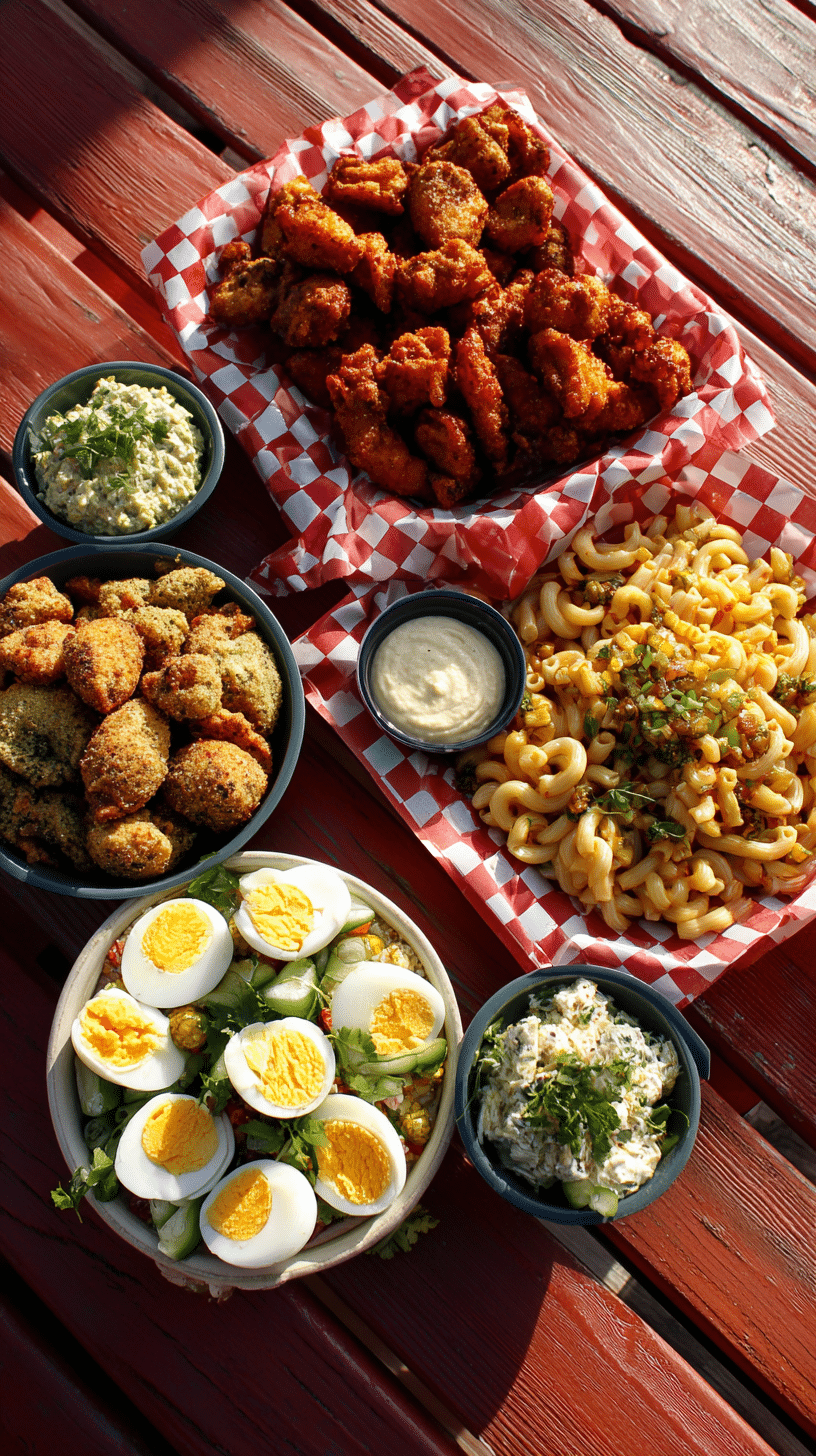
Cool down your plate with fall fruit salad recipes or something tangy like vinegar slaw.
Party Platters and Game Day Boards
Arrange the gator bites on a wooden platter with toothpicks, sauces in mini ramekins, and sliced jalapeños or pickled okra for garnish.
Storage, Leftovers & Reinvented Recipes
How to Store the Bites
- Store in a sealed container in the fridge for up to 3 days.
- Freeze wrapped and uncooked bites for up to 3 months
Best Ways to Reheat
- Air fryer for 5 minutes at 375°F
- Oven at 350°F for 10 minutes
Avoid microwaving—it will make the bacon soggy.
Leftover Magic: Recipes from WW2 Inspiration
- Add to gumbo
- Dice into tacos with slaw
- Toss in pasta or Cajun rice bowl
Nutrition, Ethics & Gator Facts
Health Benefits of Gator Meat
Low in fat, high in protein, and packed with vitamins, gator meat is a leaner alternative to beef or pork, making it a great choice for those seeking clean eating options.
Food Safety Essentials
- Always cook to internal temp of 145°F
- Wash all surfaces after handling raw meat
- Use USDA-approved sources for wild game
Where to Buy Gator Meat Today
Look for exotic meat markets, online wild game suppliers, or Southern farmers’ markets that offer gator tail and other parts.
Don’t miss our liquid smoke russet potatoes for another smoky side idea.
Conclusion
The WW2 wrapped gator bites recipe isn’t just a conversation starter—it’s a Southern classic rich with history, flavor, and pride. Whether you’re paying homage to wartime resourcefulness or just want to wow your guests, these bacon-wrapped bites deliver.
Looking for inspiration? Try Mediterranean chickpea salad for a unique pairing twist.
Want a feed that makes you hungry? I’ve got boards full of them on Pinterest—and stories to match on Medium.
FAQs
What are gator bites made of?
They’re made from chunks of alligator tail meat, marinated, seasoned, wrapped in bacon, and grilled or baked to perfection.
What did the chef soak the alligator meat in to tenderize and flavor it?
Buttermilk with hot sauce is the classic method used in the WW2 wrapped gator bites recipe.
What kind of sauce do you eat with gator bites?
Remoulade, chipotle mayo, garlic aioli, or Cajun ranch work beautifully.
What should I marinate an alligator in?
Buttermilk, lemon juice, or citrus-herb brines are most effective for tenderizing and adding flavor.

